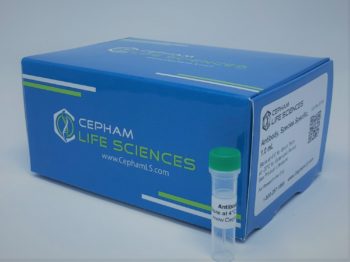Description
Aliases
ATP synthase subunit beta, mitochondrial, Atp5b
Antibody Type
Polyclonal Antibody
Species
Mouse
Uniprot ID
P56480
Immunogen
Recombinant mouse ATP synthase subunit beta, mitochondrial protein (47-529AA)
Raised In
Rabbit
Species Reactivity
mouse
Tested Applications
ELISA;Not yet tested in other applications.
Background / Function
Mitochondrial membrane ATP synthase (F1F0 ATP synthase or Complex V) produces ATP from ADP in the presence of a proton gradient across the membrane which is generated by electron transport complexes of the respiratory chain. F-type ATPases consist of two structural domains, F1 – containing the extramembraneous catalytic core, and F0 – containing the membrane proton channel, linked together by a central stalk and a peripheral stalk. During catalysis, ATP synthesis in the catalytic domain of F1 is coupled via a rotary mechanism of the central stalk subunits to proton translocation. Subunits alpha and beta form the catalytic core in F1. Rotation of the central stalk against the surrounding alpha3beta3 subunits leads to hydrolysis of ATP in three separate catalytic sites on the beta subunits.
Isotype
IgG
Conjugate
FITC
Storage Buffer
Preservative: 0.03% Proclin 300
Constituents: 50% Glycerol, 0.01M PBS, PH 7.4
Form
Liquid
Storage
Shipped at 4°C. Upon delivery aliquot and store at -20°C or -80°C. Avoid repeated freeze.
Purity
Caprylic Acid Ammonium Sulfate Precipitation purified
Research
Others
Literature
[1]”Label-free quantitative proteomics of the lysine acetylome in mitochondria identifies substrates of SIRT3 in metabolic pathways.”Rardin M.J., Newman J.C., Held J.M., Cusack M.P., Sorensen D.J., Li B., Schilling B., Mooney S.D., Kahn C.R.,Additional information
| Size | 50μg, 100μg |
|---|


